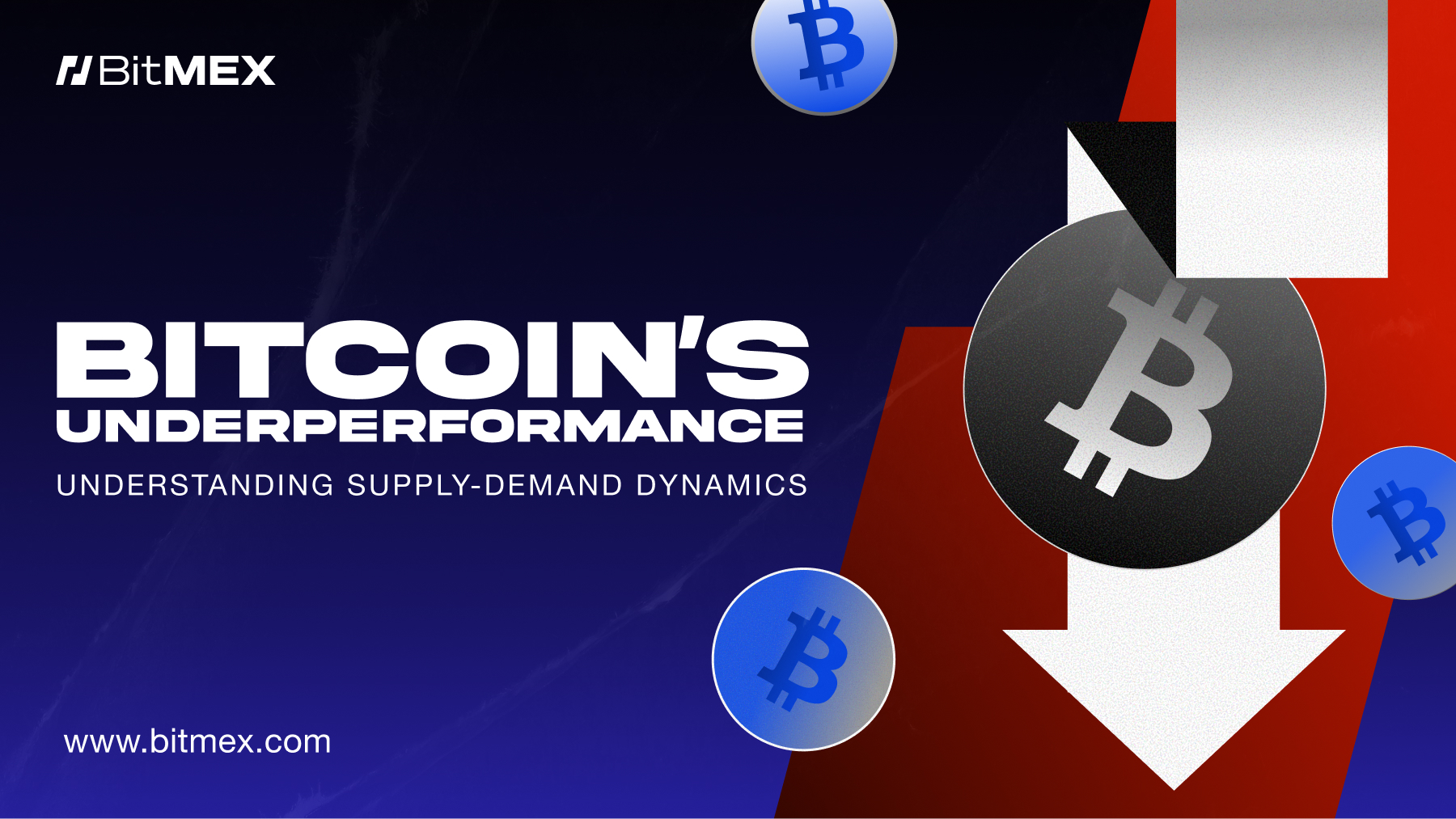This year, Bitcoin has underperformed compared to almost all major asset classes. As we head into the final quarter of 2025, Bitcoin’s performance has noticeably lagged behind gold, the Nasdaq, the S&P 500, the Hang Seng Index, and the Nikkei 225. Investors who bought Bitcoin around the beginning of 2025, anticipating favorable price movements from President Trump’s support, are now grappling with modest gains of just over 5%.
This article will delve into Bitcoin’s recent underperformance, focusing on key supply and demand dynamics. Specifically, we will explore long-term Bitcoin holder behavior, the shift in mining activity, and ETF flows to unpack Bitcoin’s ever-evolving price action.
Bitcoin’s poor performance year
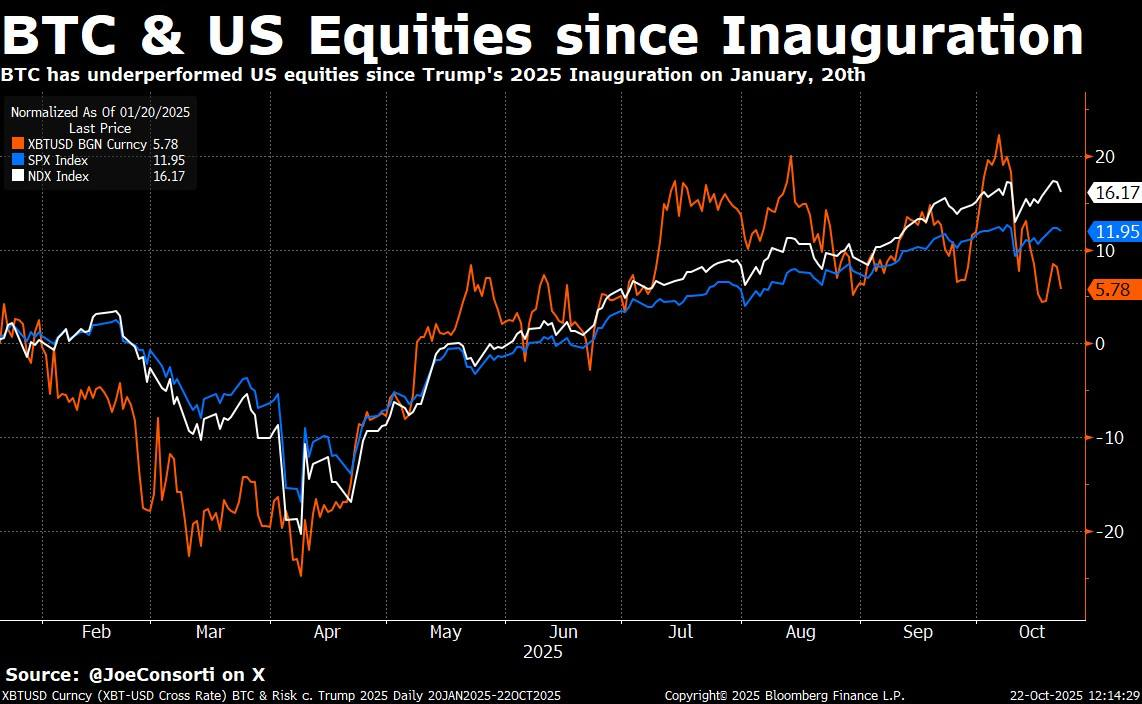 The chart above shows how Bitcoin has underperformed US stocks since Trump’s inauguration in 2025, with the Nasdaq and S&P 500 showing an outperformance of more than 100% compared to Bitcoin’s relatively flat trajectory.
The chart above shows how Bitcoin has underperformed US stocks since Trump’s inauguration in 2025, with the Nasdaq and S&P 500 showing an outperformance of more than 100% compared to Bitcoin’s relatively flat trajectory.
If you bought Bitcoin on opening day (January 20, 2025), your investment would return a modest 5.78%. In comparison, major indices like the Nasdaq and S&P 500 have significantly outperformed Bitcoin over the same period. Gold, traditionally seen as a safe-haven asset, also overshadowed Bitcoin’s performance.
Selling pressure: long-term equity holders and miners
$100K – Psychological TP level for OGs
Bitcoin is hovering near the psychological price point of $100,000. Long term holders appear to be offloading on risk as the price stagnates around this level.
Increased selling of OGs every time BTC > $100k
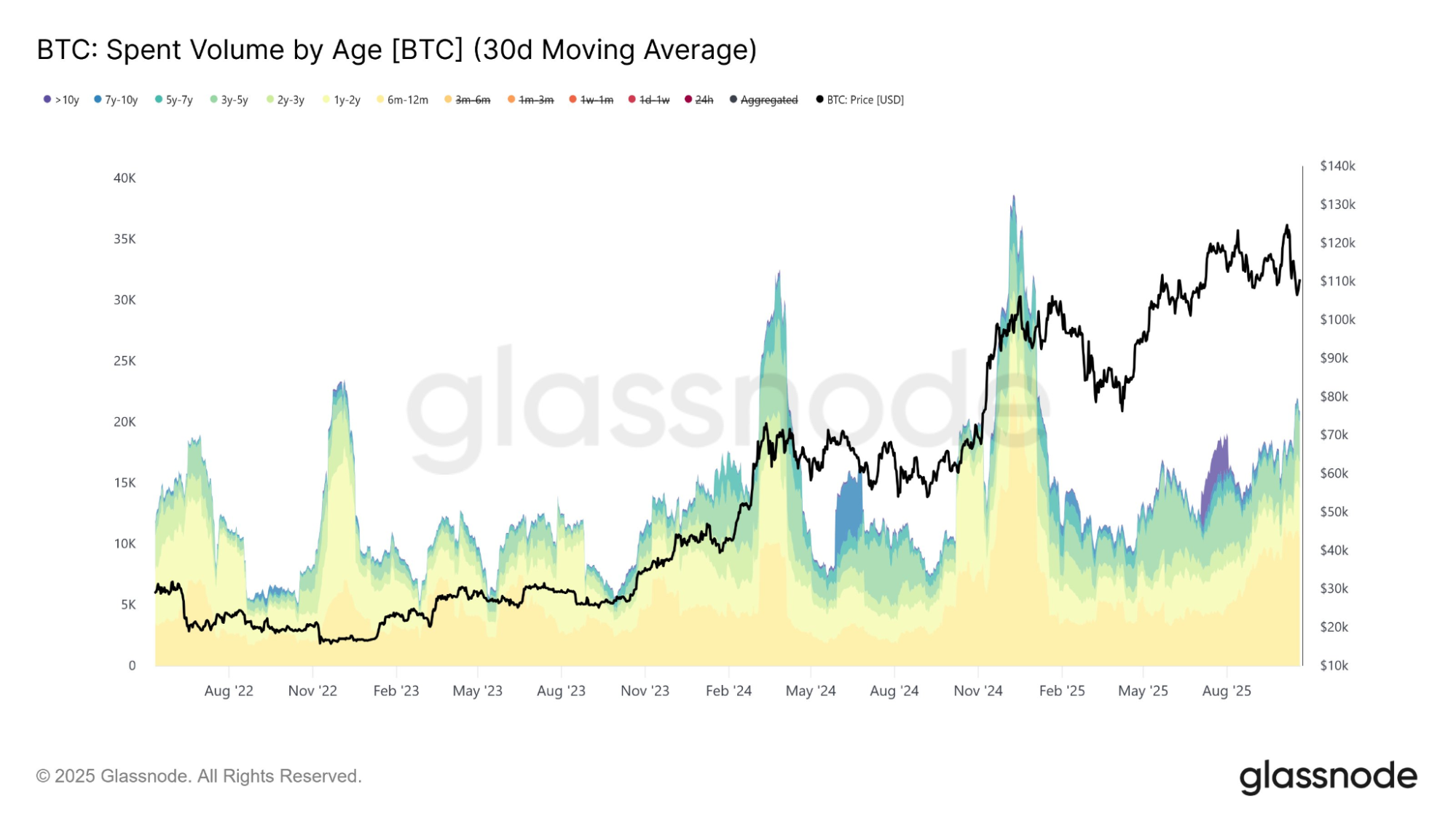 The chart above shows an uptick in spending by long-term holders, indicating that more Bitcoin OGs are selling the token after holding it for years, which the purple and blue colors in the chart indicate. The chart reveals periods of increased activity as old coins are spent; There is a spike in spending volume when the BTC price exceeds $100k, reinforcing the idea that OG Bitcoin holders are unloading their positions at current prices.
The chart above shows an uptick in spending by long-term holders, indicating that more Bitcoin OGs are selling the token after holding it for years, which the purple and blue colors in the chart indicate. The chart reveals periods of increased activity as old coins are spent; There is a spike in spending volume when the BTC price exceeds $100k, reinforcing the idea that OG Bitcoin holders are unloading their positions at current prices.
We believe that with other asset classes on the rise this year, especially growth in the AI sector, many technology-focused regulatory organizations appear to be turning away from Bitcoin to diversify and participate in new opportunities. This shift has led to sustained overall oversupply, capping every rally we’ve seen this year.
Bitcoin whale tracking
This selling pressure can lead to a frustrating market environment, with Bitcoin experiencing choppy price action rather than meaningful rises. To stimulate a potential bullish move, Bitcoin may need to break the $100,000 support level first to effectively flush out these sellers.
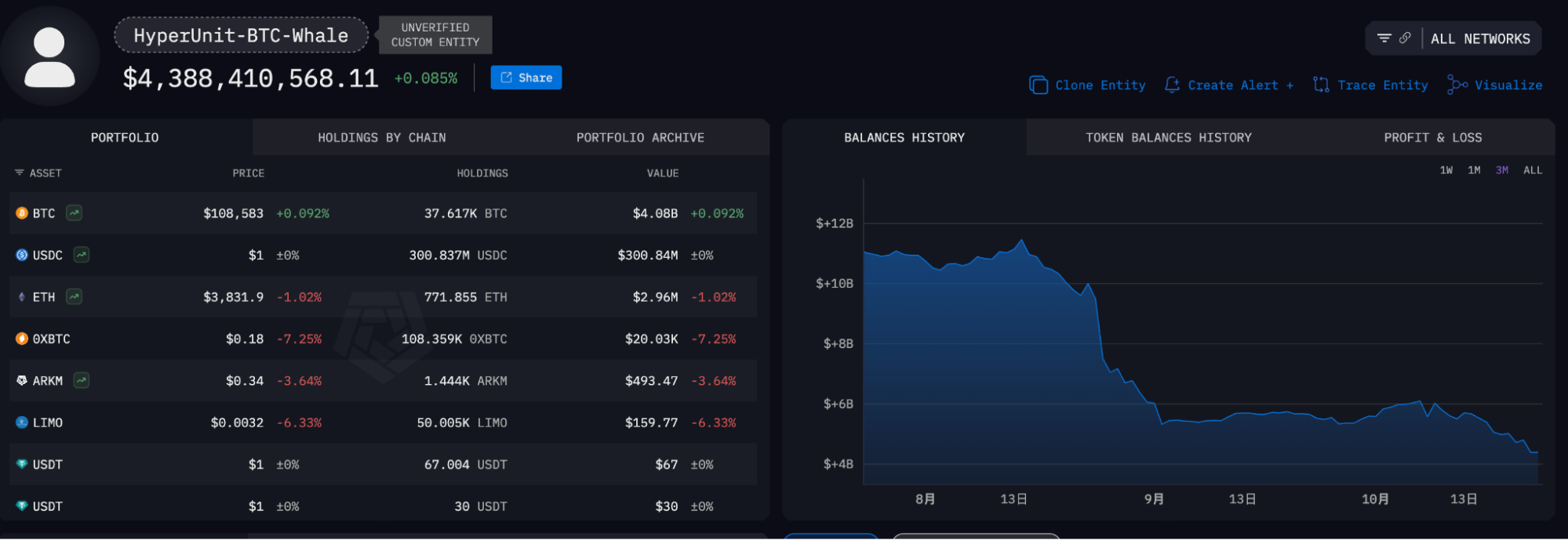 One of the most important wallets driving this behavior can be traced to Arkham Intelligence. In October alone, this wallet deposited over $600 million worth of Bitcoin on various exchanges, serving as a key marker for monitoring signs of market relief. You can Discover the wallet here.
One of the most important wallets driving this behavior can be traced to Arkham Intelligence. In October alone, this wallet deposited over $600 million worth of Bitcoin on various exchanges, serving as a key marker for monitoring signs of market relief. You can Discover the wallet here.
Bitcoin miners shift from network security to AI data centers
As Bitcoin miners continue to migrate part of their operations away from Bitcoin mining to high-performance data centers driven by artificial intelligence, Bitcoin security may face new risks. Miners turning to artificial intelligence may weaken Bitcoin’s decentralized network, reducing its hash rate in the long term.
- Basic Scientific ($CORZ) HPC has signed a 12-year HPC hosting agreement with CoreWeave, transforming 100MW of existing infrastructure and paving the way for a wider merger vote at the end of the month.
- Iris Energy ($IREN) It has expanded its AI cloud to include more than 23,000 NVIDIA GPUs, and has achieved Preferred Partner status with NVIDIA.
- Terawolf (WULF) Awarded a 10-year, 200+ MW AI hosting contract worth US$8.7 billion.
- BitDir ($BTDR)one of the most aggressive players, plans to repurpose part of its Norwegian Tydal site (175 MW) and its Clarington Ohio facility (570 MW capacity) into AI data centers by late 2026, targeting more than 200 MW of AI IT load.
- Even traditional miners like pure play Clean Spark (CLSK) and Riot Pads ($RIOT) They hire “chief data center administrators” and design new campuses around dual-use computers.
Implications of Bitcoin network vulnerability: Not shown
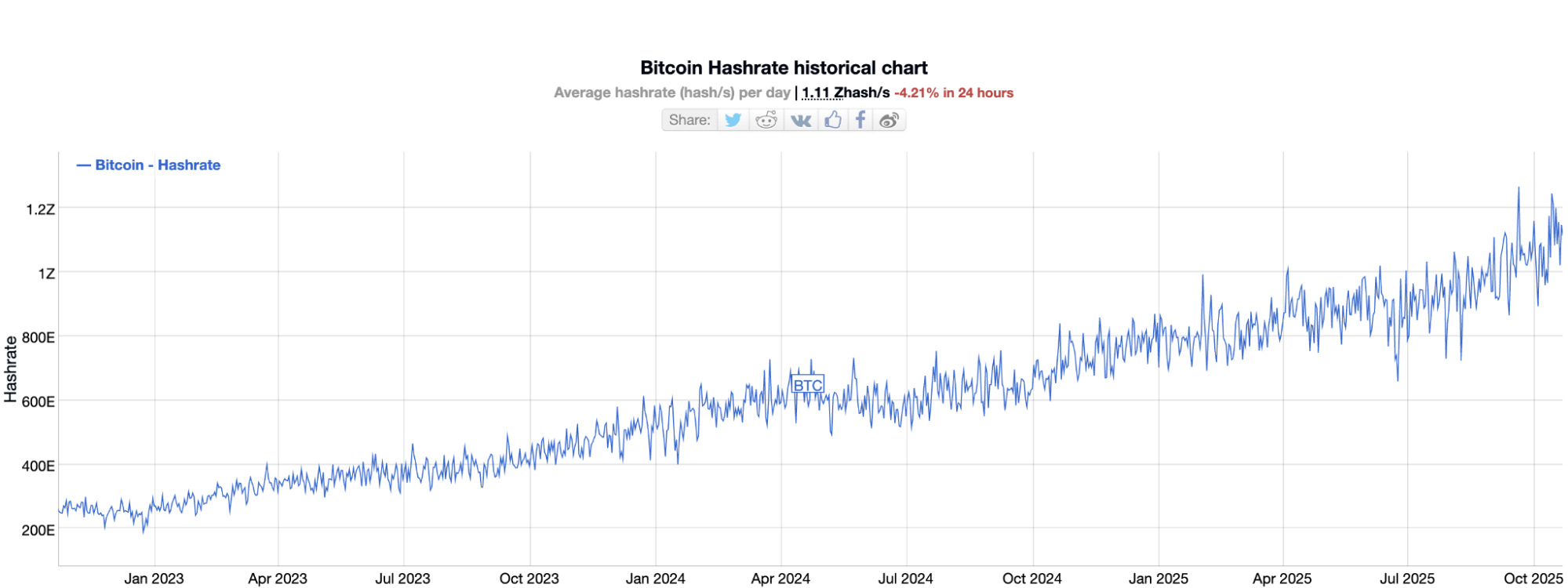
A lower hashrate, resulting from miners moving away from securing the Bitcoin network, may lead to a less secure network. A less secure Bitcoin network is less attractive to institutional investors, which could lead to lower demand and, ultimately, lower prices.
Miners, who have provided critical support for Bitcoin’s infrastructure, are now shifting their focus toward more profitable projects in artificial intelligence and cloud services. This migration raises potential concerns about Bitcoin’s future as a store of value and a decentralized asset.
Demand-Side Dynamics: Bitcoin ETF Flows and Government Seizures
ETFs are the biggest demand factor
This chart shows the relationship between Bitcoin ETF flows and price movements. When ETF flows were strong, Bitcoin saw price increases, but a lack of flows since mid-July has led to a stagnation in the price of Bitcoin, underscoring the important role these financial instruments play in driving demand.
The chart below compares Bitcoin ETF inflows with the price of Bitcoin in 2025. It indicates that Bitcoin ETF inflows provided a notable boost to the price of Bitcoin earlier in the year – however, as of July 10, inflows have stagnated and so has the price of Bitcoin.
 Limited growth of ETF flows
Limited growth of ETF flows
While the entry of institutional capital via Bitcoin ETFs is a strong indicator of Bitcoin’s maturation as an asset class, the lack of sustained inflows suggests that institutional interest may have plateaued.
US government confiscation and its impact on the viability of Bitcoin
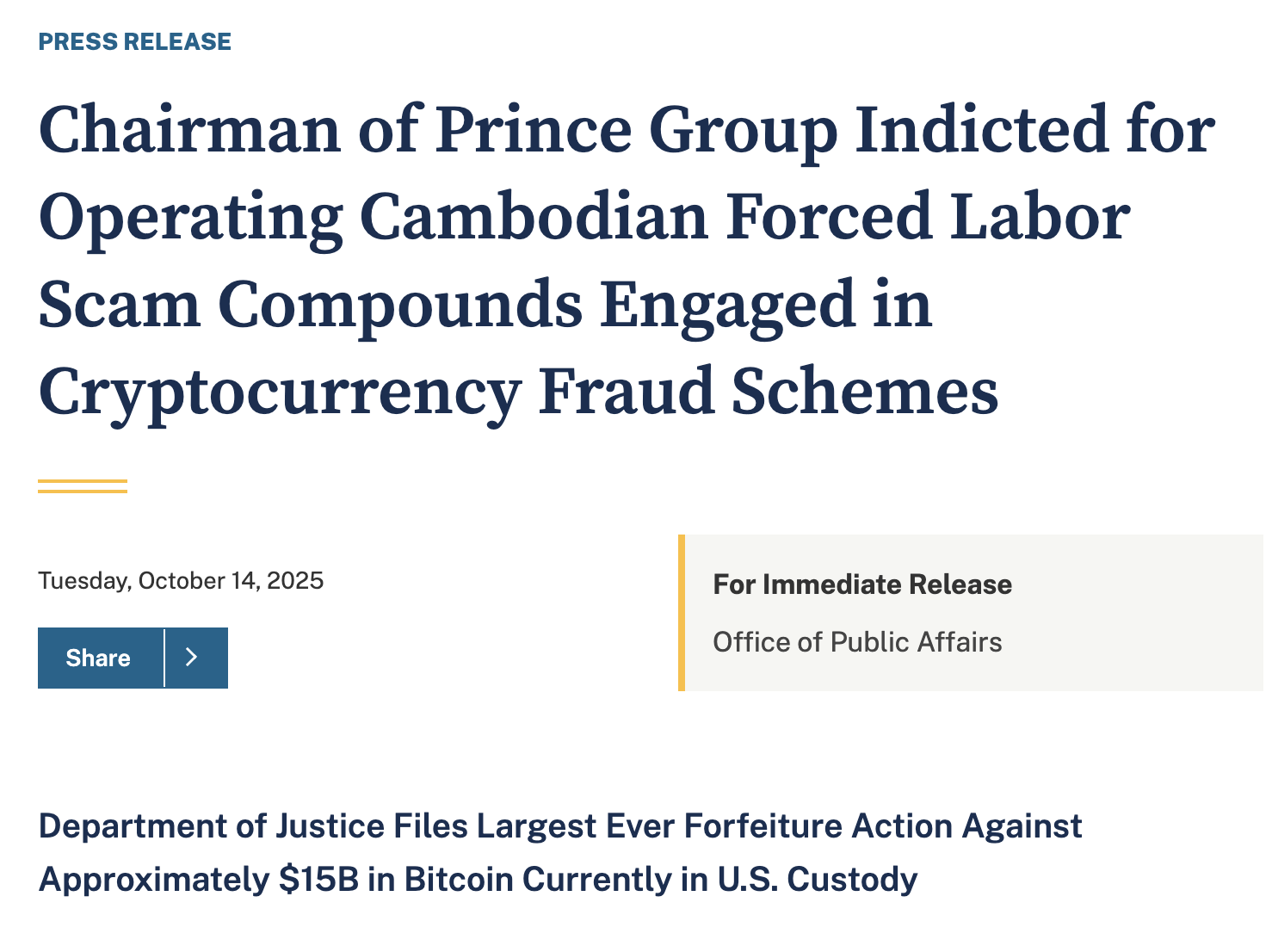
Government Seizures and the Fundamental Value of Bitcoin
One of the main promises of Bitcoin was the ability to escape government control. However, the recent seizure of Bitcoin by the US government, which now owns billions of Bitcoin, has led to concerns about the fundamental security of Bitcoin.
The idea of holding Bitcoin as a hedge against government overreach has come into increasing question, as government actions appear to challenge the premise of Bitcoin’s financial independence.
Possible bearish sentiment
This rise in government scrutiny is a growing concern for long-term Bitcoin holders. If Bitcoin’s role as a decentralized store of value is undermined, it could lead to a further loss of confidence in its future. This may also contribute to the selling pressure exerted by OGs.
Privacy coins as an alternative
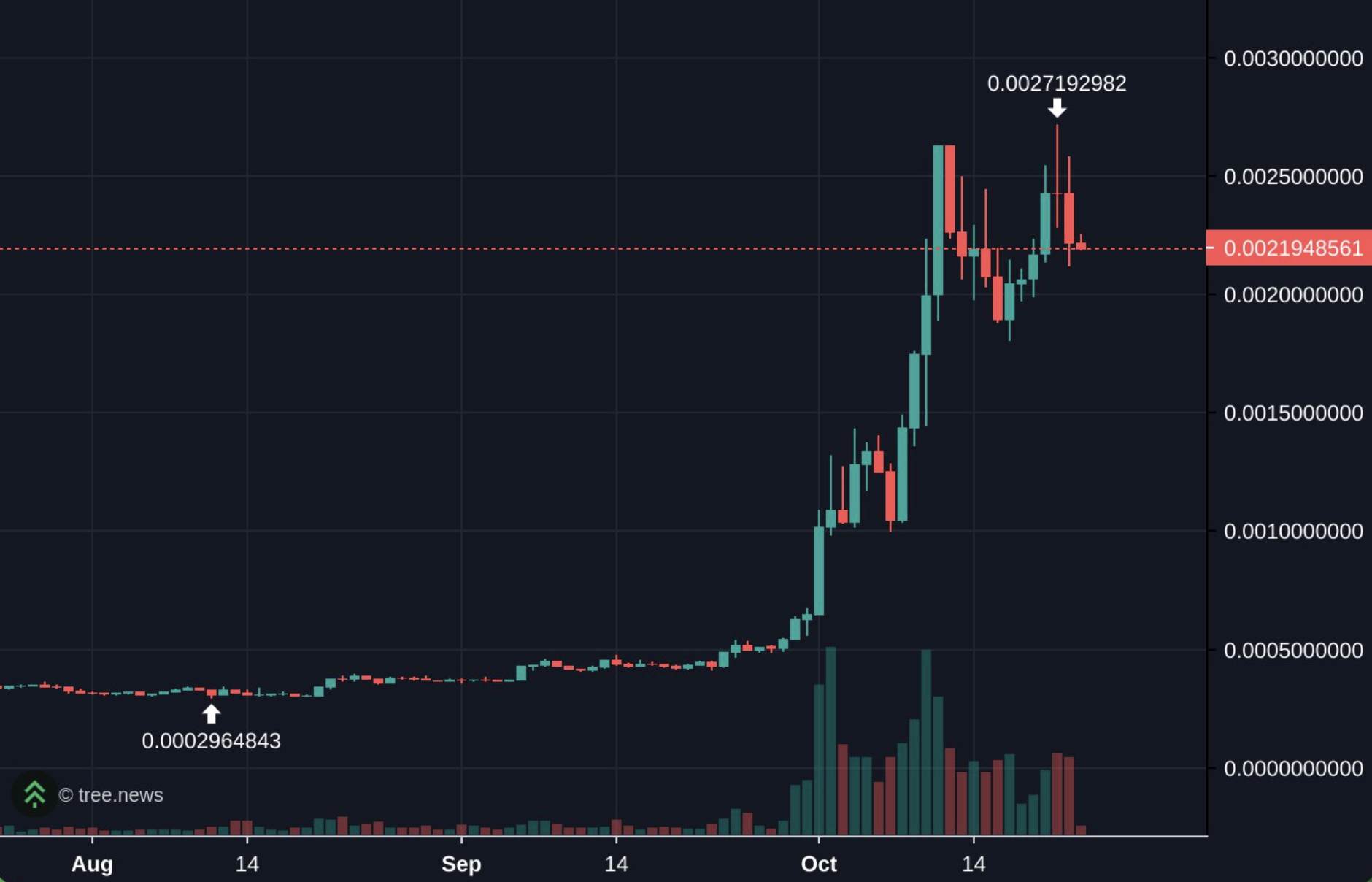 The ZECUSDT/BTCUSDT chart shows that Zcash (ZEC) could benefit from Bitcoin viability concerns
The ZECUSDT/BTCUSDT chart shows that Zcash (ZEC) could benefit from Bitcoin viability concerns
Increased surveillance of the Bitcoin blockchain and increased government seizures have led to renewed interest in privacy-focused cryptocurrencies like Zcash. Investors looking for assets that offer greater anonymity and protection from government surveillance are flocking to privacy coins.
Conclusion: What lies ahead for Bitcoin?
Bitcoin has underperformed compared to major asset classes this year, largely due to a mix of supply-side and demand-side factors. Long-term Bitcoin holders sell their Bitcoin, while miners move their operations to AI data centers, potentially weakening the security of the Bitcoin network in the long term. On the demand side, Bitcoin ETFs have not generated meaningful inflows since mid-July, and the growing risk of government control has raised concerns about Bitcoin’s future as a decentralized and resilient asset.
The key question going forward will be whether Bitcoin is able to regain its previous momentum or if we are in for a prolonged period of sideways movement as supply-side pressures continue. As uncertainty continues over supply and demand dynamics, two key factors should be noted: Bitcoin whales stop depositing on exchanges and ETFs’ NAVs start rising again.
